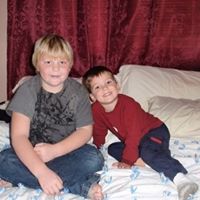Alexander P Mathews
age ~80
from Manhattan, KS
- Also known as:
-
- Alex P Mathews
- Alexander P Matthews
- Mathews Alexander
- Matthews Alexander
- Phone and address:
-
1603 Barrington Dr, Manhattan, KS 66503
(785)5379745
Alexander Mathews Phones & Addresses
- 1603 Barrington Dr, Manhattan, KS 66503 • (785)5379745
- Port Hueneme, CA
Work
-
Position:Production Occupations
Education
-
School / High School:University of Miami School of Law
Ranks
-
Licence:New York - Currently registered
-
Date:1981
Us Patents
-
Process For The Production Of Road Deicers From Water Plant Residuals
view source -
US Patent:54983622, Mar 12, 1996
-
Filed:Mar 21, 1995
-
Appl. No.:8/407678
-
Inventors:Alexander P. Mathews - Manhattan KS
-
Assignee:Kansas State University Research Foundation - Manhattan KS
-
International Classification:C09K 318
-
US Classification:252 70
-
Abstract:An improved process for the production of road deicer products preferably containing calcium magnesium acetate or calcium magnesium acetate/calcium magnesium propionate is provided. The process involves first providing a residual water plant sludge starting material containing calcium and magnesium compounds, and reacting this sludge with stoichiometric quantities of at least acetic acid and more preferably both acetic and propionic acids. The resultant reaction product can then be dried, ground and granulated to provide a dry, free flowing road deicer product.
-
Tapered Bed Apparatus For Fluid-Solid Mass Transfer Operations
view source -
US Patent:56267630, May 6, 1997
-
Filed:Oct 11, 1995
-
Appl. No.:8/540669
-
Inventors:Alexander P. Mathews - Manhattan KS
-
International Classification:C02F 142
-
US Classification:210660
-
Abstract:A mass transfer method for transferring a component from gases or liquids into adsorbent granules or ion-exchange resin granules utilizing a mass transfer apparatus that allows for the fluid velocity to decrease from the inlet to the outlet. The apparatus is partially filled with porous granules comprising large and small diameter particles arranged such that the larger diameter granules are located closer to the inlet than the smaller diameter granules.
-
Tapered Bed Filtration Apparatus
view source -
US Patent:52924360, Mar 8, 1994
-
Filed:May 13, 1992
-
Appl. No.:7/882516
-
Inventors:Alexander P. Mathews - Manhattan KS
-
Assignee:Kansas State University Research Foundation - Manhattan KS
-
International Classification:B01D 2446
-
US Classification:210275
-
Abstract:A filter apparatus for filtering fluids such as gases or liquids includes a casing defining an inlet and an outlet, and having a peripheral wall extending between the inlet and outlet. The peripheral wall defines a chamber having a longitudinal axis and a cross-sectional area, when viewed in the direction of the longitudinal axis, which increases between the inlet and the outlet. A bed of particulate filtering media is disposed within the chamber, the media ranging in size between relatively large particles disposed adjacent the inlet and smaller particles disposed closer to the outlet. Preferably, the size of the particles is chosen based upon the relationship between the lifting force exerted on the particles by a fluid flowing upward through the chamber and the weight of the particles. As the lifting force exerted on the particles varies, due to varying velocity of the fluid passing upward through the chamber, the size of the particles is also varied at a corresponding rate so that all particles are effected equally by the lifting force of the fluid and mixing of the particles is inhibited.
-
Fermentation Process For The Production Of Calcium Magnesium Road Deicer
view source -
US Patent:53244427, Jun 28, 1994
-
Filed:Jun 16, 1992
-
Appl. No.:7/897983
-
Inventors:Alexander P. Mathews - Manhattan KS
-
Assignee:Kansas State University Research Foundation - Manhattan KS
-
International Classification:C09K 318
-
US Classification:252 70
-
Abstract:A relatively low cost double salt road deicer composition is provided which includes a preponderant quantity of calcium magnesium propionate (CMP), together with smaller quantities of calcium magnesium acetate (CMA) and related salts. The product is preferably made by inoculating a sugar substrate (e. g. , glucose, xylose or the hydrolysis products of biomass or starch) with facultative bacteria, followed by fermentation under anoxic conditions at moderate temperatures (30. degree. -37. degree. C. ) and pH (5-7) in order to yield an organic acid mixture; the mixture is then reacted with a source of magnesium and calcium cations such as dolomite to produce mixed salts, which are then recovered as a solid road deicer. The preferred inoculum is P. acidi-propionici, and the fermentation step can be carried out batch-wise or continuously.
-
Mass Transfer Into Porous Granules Using Stratified Semifluidized Beds
view source -
US Patent:46247890, Nov 25, 1986
-
Filed:Mar 18, 1985
-
Appl. No.:6/713252
-
Inventors:Alexander P. Mathews - Manhattan KS
-
Assignee:Kansas State University Research Foundation - Manhattan KS
-
International Classification:B01D 1502
B01D 5312 -
US Classification:210661
-
Abstract:Mass transfer of components from gases or liquids into porous absorbent granular media is carried out by a method using a semifluidized bed in stratified condition. The absorbent medium is composed of both small and large granules. In the stratified bed, at least part of the small size granules are captivated in a packed upper section. The larger granules are primarily in a fluidized section below the packed section. The fluid being treated flows upwardly through the bed first contacting the larger granules in the fluidized section and then exiting through the smaller packed granules. With this arrangement, increased fluid volumes can be processed before breakthrough of the component being absorbed.
Resumes

Alexander Mathews
view source
Alexander Mathews
view sourceLocation:
United States

Alexander Mathews
view sourceLocation:
United States

Alexander Mathews
view sourceLocation:
United States

Alexander Mathews
view sourceLocation:
United States

Alexander Mathews
view sourceLocation:
United States
Lawyers & Attorneys

Alexander S. Mathews - Lawyer
view sourceLicenses:
New York - Currently registered 1981
Education:
University of Miami School of Law
Name / Title
Company / Classification
Phones & Addresses
Owner
Alexander P. Mathews
Business Consulting Services
Business Consulting Services
1603 Barrington Dr, Manhattan, KS 66503
Owner
Clean Technologies
Consulting Engineering
Consulting Engineering
1603 Barrington Dr, Manhattan, KS 66503
Plaxo

Alexander Mathews
view sourceGBM
Flickr

Alexander Mathews
view source
Alexander Mathews
view source
Alexander Mathews
view source
Alexander Mathews
view source
Alexander Mathews
view source
Alexander Mathews
view source
Bryan Alexander Mathews
view source
Alexander Mathews
view sourceClassmates

Hampton High School, Hamp...
view sourceGraduates:
alexander mathews (2000-2004),
kyle hollifield (1962-1966),
danny williams (1977-1981),
Teresa Humphrey (1978-1982)
kyle hollifield (1962-1966),
danny williams (1977-1981),
Teresa Humphrey (1978-1982)

Mendon High School, Mendo...
view sourceGraduates:
Larry Drewer (1988-1992),
Mike Mortensen (2002-2006),
Alex Mathews (2004-2008),
Marvin Avery (1974-1978)
Mike Mortensen (2002-2006),
Alex Mathews (2004-2008),
Marvin Avery (1974-1978)

Hudson Middle School, Hud...
view sourceGraduates:
Alex Mathews (2001-2005),
Rebecca Cole (1993-1996),
Lynn Keyser (1986-1990),
Kathryn Fallon (1995-1996)
Rebecca Cole (1993-1996),
Lynn Keyser (1986-1990),
Kathryn Fallon (1995-1996)
Googleplus

Alexander Mathews

Alexander Mathews

Alexander Mathews

Alexander Mathews
Work:
Sling Furniture - Sales (Project) (2013)

Alexander Mathews
Work:
MUSLIM ASSOCIATION COLLEGE OF ENGG - LECTURER

Alexander Mathews

Alexander Mathews

Alexander Mathews
Youtube
Get Report for Alexander P Mathews from Manhattan, KS, age ~80













